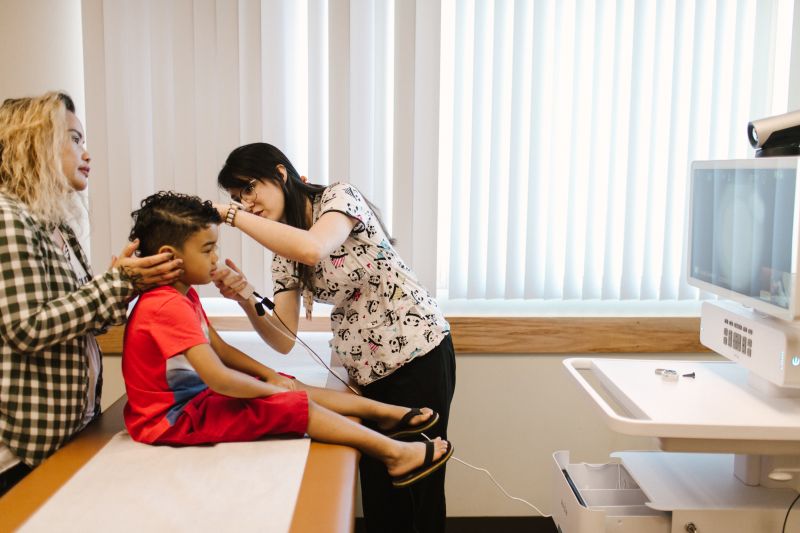Inspire 2018 FALL
Wilcox: Coming to a Screen Near You
 How telemedicine is bringing doctors and patients closer together
How telemedicine is bringing doctors and patients closer together

We communicate immediately through texts, email and smartphones, and can look up information in an instant online. Life has become all about convenience. Now, telemedicine is providing an easier way to see a doctor. More than half of all U.S. hospitals now use some form of telemedicine, including Wilcox Medical Center.
“There's so much that goes into seeing a specialist who's on another island or even the mainland,” Wilcox Chief of Staff Dr. Amy Corliss said. “You have to get a plane, you have to have a car, you have to pay for everything you need while you're there, and it's time away from your family, your job and everything else you need to do. Being able to see a doctor by using technological devices makes it that much more convenient, that much less expensive and really provides the same level of quality of care.”
Remote health care technology has already made a significant impact for Wilcox patients, especially for diabetics being treated for nephrology, also known as kidney disease. More than 100 nephrology visits have been done at the medical center via telemedicine.
Connecting remotely has also proven helpful for pediatric patients recovering from surgery. Caden Brassington of Kapaa appeared to have developed “sunken chest,” or pectus excavatum, a condition where the breastbone sinks into the torso and can impede the lungs or heart. The teenager had surgery to insert a metal bar into his chest at Kapiolani Medical Center for Women & Children. His recovery went well, but the visits back and forth from Kauai to Oahu were costly and time-consuming for his family. His mother, Andrea, agreed to video conferencing for follow-ups and was surprised by the amount of personal care that could be delivered through a screen.
“I was realizing when we were sitting there, [the specialist] still had that caring doctor’s tone,” she said. “It felt definitely close enough that it wasn't like we were, you know, miles away. It felt really personal, just like a checkup. He even was able to do the medical part of it and really look at Caden to see that his incisions were OK. It really worked out amazing for us and it was nice to know that we didn't have to do the plane ride, get the car and/or stay overnight.”
While the on-screen visit is a simple process, the software and technical standards behind it are very complex. Telemedicine relies on major infrastructure that provides secure networks so providers can use the internet and wireless, satellite and telephone media to reach patients without compromising their privacy.
“People ask all the time ‘Why can't I just use my phone and FaceTime?’” Dr. Corliss said. “While that's technically possible for social reasons, it's not really possible in health care. There are a lot of discussions that happen that you really want to make sure are kept in a way that nobody else can access. That takes a lot of support. It takes a secure and fast network that will allow a video conference that doesn't get interrupted or lag.”
Many agree telemedicine must be a trusted and reliable resource. There is also a lot of excitement for the opportunities it will bring for future care on Kauai.

